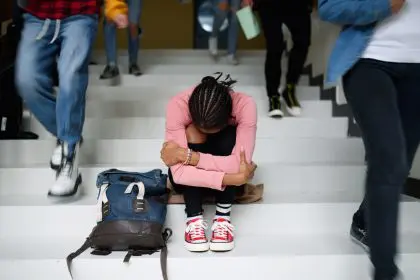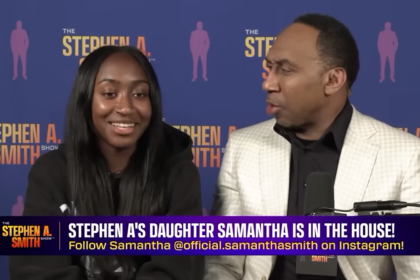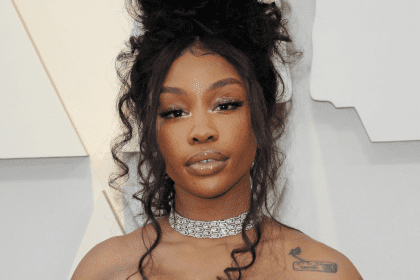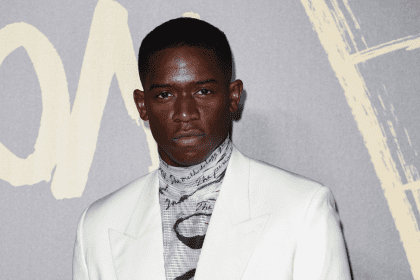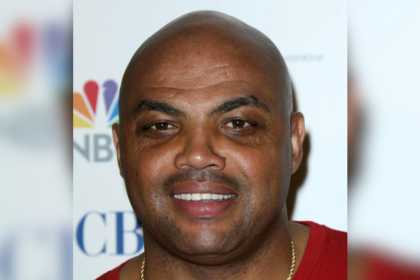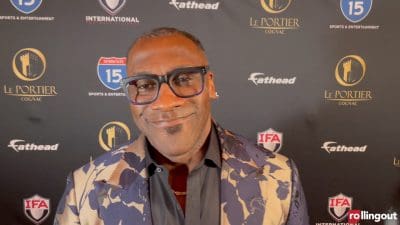The death of Eric Garner, the 43-year old Staten Island, New York, father of six who was murdered by the NYPD on July 17, has angered and outraged a community all too familiar with the reality of police brutality. Garner was accused of illegally selling cigarettes outside a beauty shop and became angry as the police questioned him and moved in. In bystander footage that surfaced of the incident, an officer immediately grabs Garner and puts him in a chokehold; with Garner repeatedly pleading that he can’t breathe. The 350-plus pound Garner collapses as several officers attempt to subdue him; only to suddenly stop moving. He was pronounced dead at the scene.
A woman named Taisha Allen was among those who filmed the incident, capturing footage of Garner on the ground motionless, as officers attempt to “question” him further. “It’s crazy, and I was like, ‘Perform CPR on him,’ and they was [sic] like, ‘He don’t need CPR,’ or whatever, and that he was not breathing at the time,” she told CBS News.
Garner’s arrest didn’t have to end in tragedy. Famed pathologist Cyril Wecht spoke to the New York Daily News about the incident and stated that the chokehold was used improperly and concluded that Garner could have been saved if the medical response had been timely. “You want to position him in such a way to facilitate breathing,” Dr. Wecht said of the initial officer action and concluded that Garner’s death was likely caused by a dangerous combination of a chokehold and being pinned down, according to the Daily News.
Officer Daniel Pantaleo, the cop reported to have applied the chokehold, has been stripped of his gun and badge as the NYPD continues its investigation. Another officer has reportedly been placed on desk duty and four of the emergency response personnel involved have also been placed on leave.
What happened to Eric Garner is indicative of what happens to many black people — particularly black males, but not exclusively — when interacting with law enforcement. More tellingly, it’s indicative of a deeper cultural and societal issue — one that is rooted in white supremacy and is part of the very fabric of the western world: the fear of black people.
In 2012, that fear of blackness led an unlicensed neighborhood watchman named George Zimmerman to stalk an innocent teenager. The Stanford Police Department’s endorsement of that fear is why Zimmerman wasn’t initially charged with a crime after he murdered that teenager.
And the public relating to that fear is why a jury of his peers could find him not guilty of that murder.
A large black male is a threatening presence to many people. As a 6-foot-2-inch, 240 pound black man, I myself have often experienced the casual crossing the street to avoid me, the reluctant sharing of a subway seat or the nervous elevator awkwardness that tend to be many people’s reactions to the “big, scary-looking black guy.” But more than just social discomfort, this inherent prejudice leads to very real brutalization for so many African American citizens. Renisha McBride was shot in the face by a white man when she knocked on his door in the middle of the night looking for help. She’d just been in a car accident. All Theodore Wafer saw was a black person and black people mean trouble. She’s dead now because of the fear of black people.
So is Travyon Martin. So is Eric Garner.
Officer Pantaleo, unlike George Zimmerman and Theodore Wafer, isn’t a private citizen who committed murder — he’s an agent of government. Thusly, he embodies both the personal prejudices and the institutional manifestation of those prejudices. His act of murder is essentially a hate crime that was funded by the taxpayers–many of whom are among those people in the community he and his ilk routinely abuse. Outrage is more than warranted, it’s necessary in order to ensure that these incidents stop. The black community is too often treated like enemy territory by police officers who have no vested interest in the people or the neighborhoods that they police. What do these men and women in blue see when they hit those streets? Judging from their actions, they see people that are less than they are. They see people who don’t deserve anything more than brutalization and force. They do not see themselves. And the feeling is mutual. It’s a toxic environment that must be addressed and rectified. One step towards bridging that cultural gap would be to encourage police recruitment with initiatives from and towards the community. It’s a start.
But even that doesn’t resolve everything.
Billionaire Dallas Mavericks owner Mark Cuban generated much controversy in May when he spoke about racism at a conference in Nashville and admitted that he was “bigoted in a lot of ways.” “I know I’m prejudiced, and I know I’m bigoted in a lot of different ways,” Cuban said at the time. “If I see a black kid in a hoodie on my side of the street, I’ll move to the other side of the street. If I see a white guy with a shaved head and tattoos (on the side he now is on), I’ll move back to the other side of the street. None of us have pure thoughts; we all live in glass houses.”
Cuban supporters, like ESPN’s Stephen A. Smith, praised him for his honesty in admitting his prejudices. But in applauding his candor, they seemed to forget Trayvon Martin and Sean Bell and Amadou Diallo. They forgot Renisha McBride and Aiyana Jones. They forgot Jordan Davis. The same fear that makes Mark Cuban cross the street, made Theodore Wafer shoot first.
And that same fear is why Eric Garner died last Thursday.




